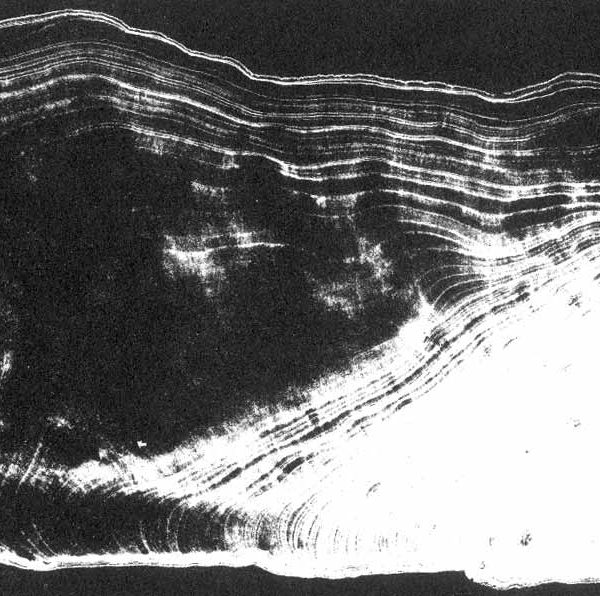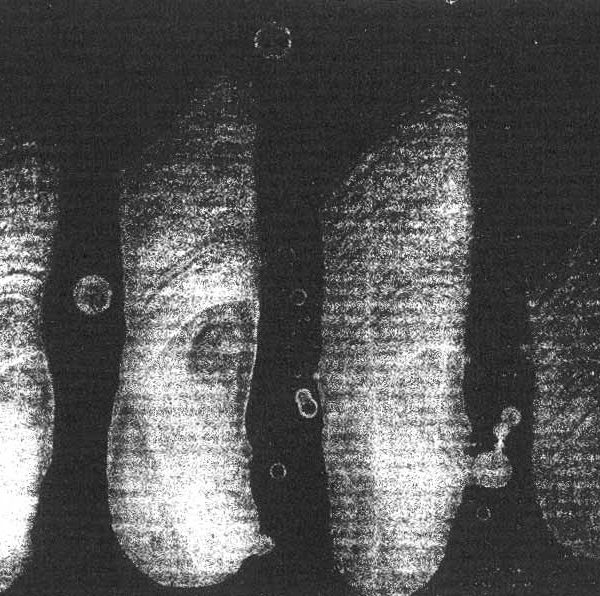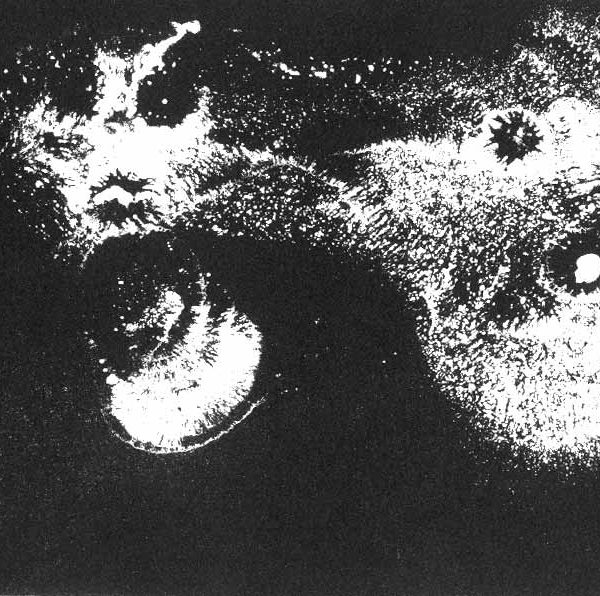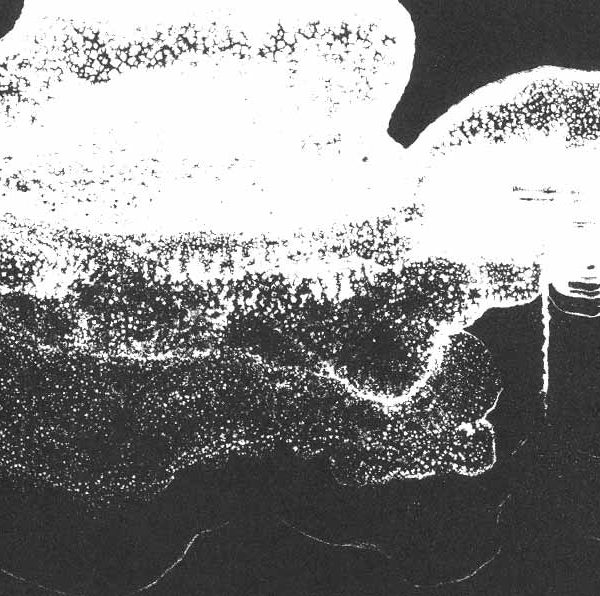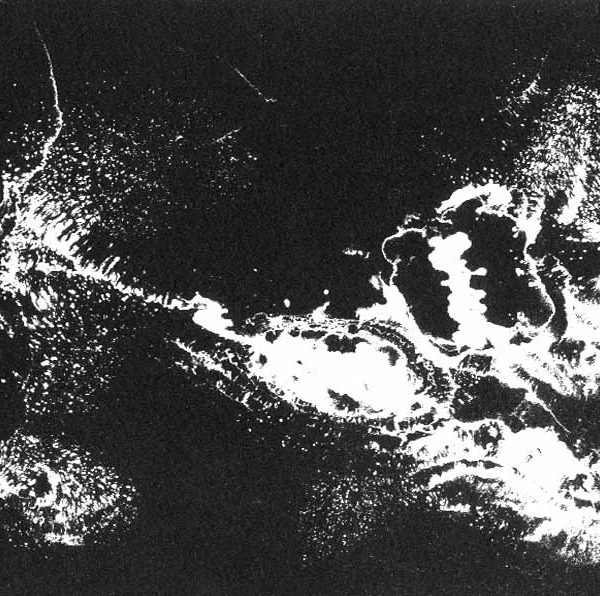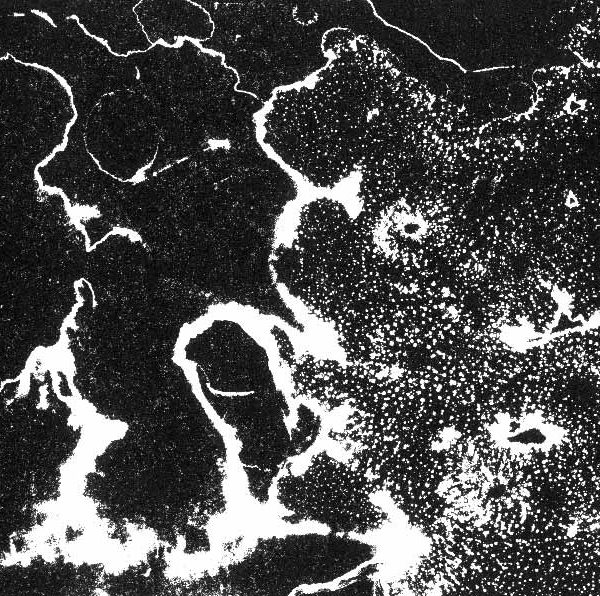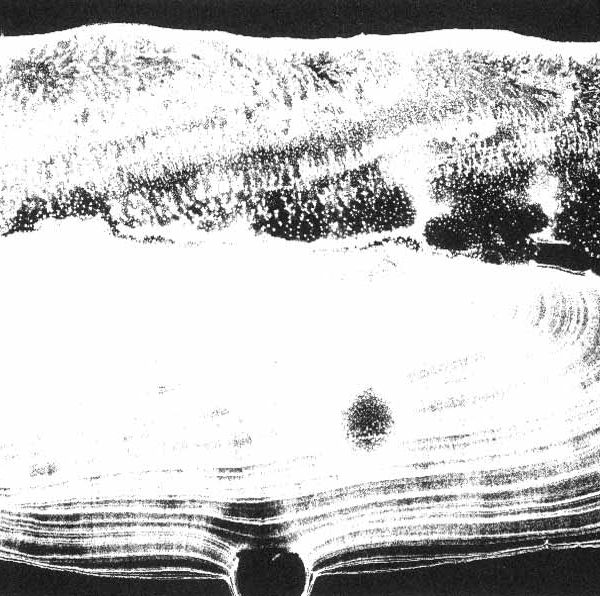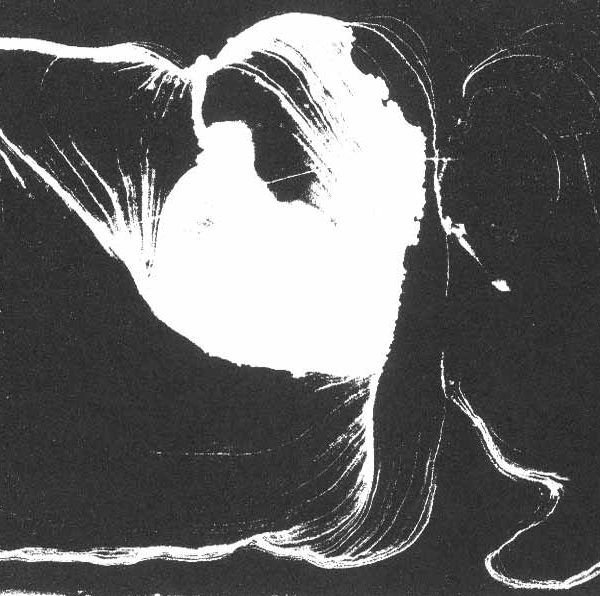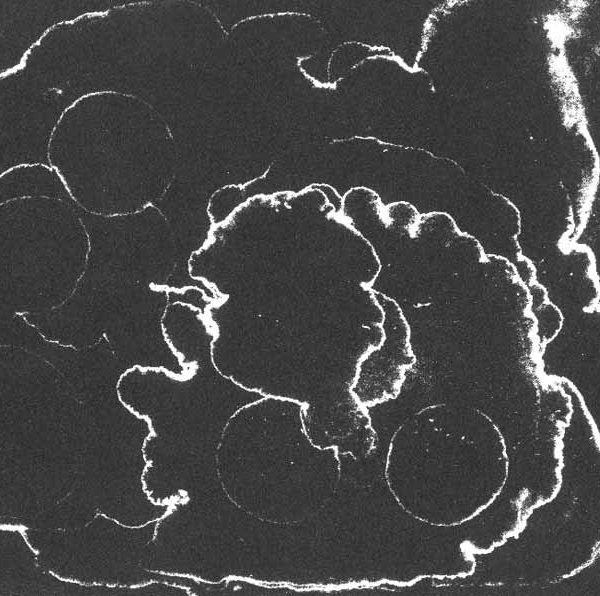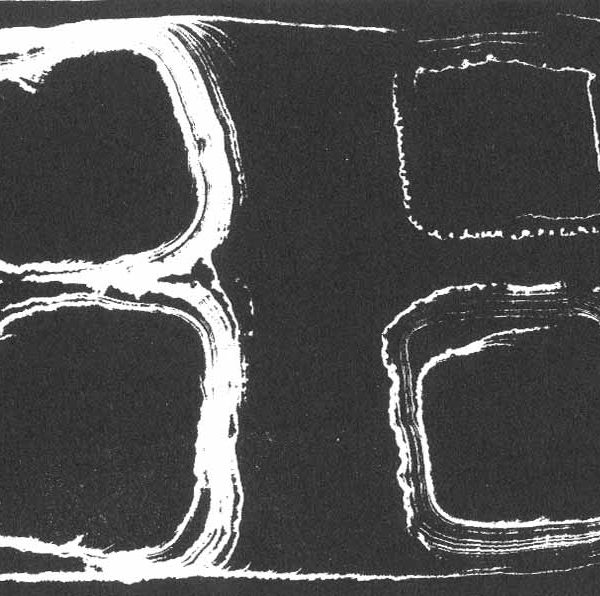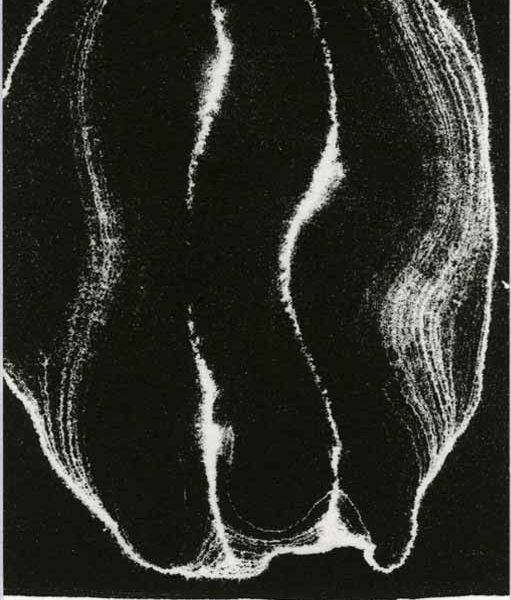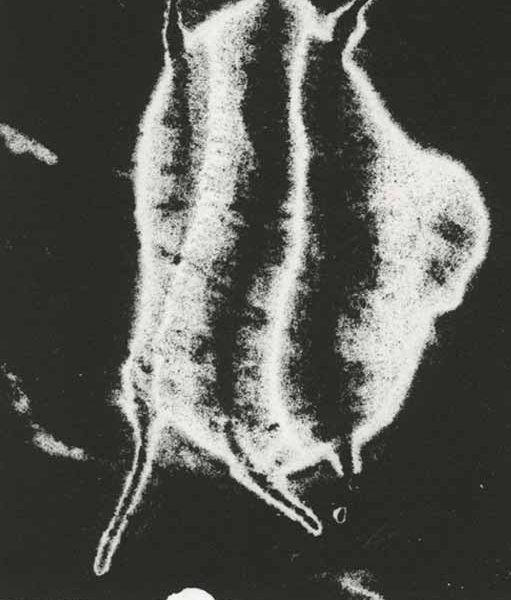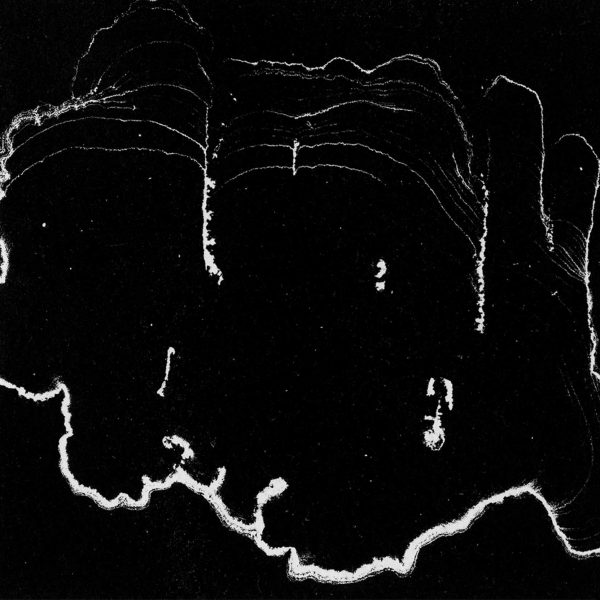Water with gum arabic wash (Lo-Shu wash)
Materials:
- water
- arabic gum
- shellac
- asphalt

Water with gum arabic wash (Lo Shu wash) is a negative technique. On a dark background, in areas of evaporation of the wash there will appear characteristic white, delicate veins. These lines created by gum arabic block fat from accessing the stone.
A Lo Shu wash can be controlled to a certain extent by pouring it into specific shapes, arranging stencils and objects, substances (e.g. salt), manipulating the leveling of the stone… Instead of water you can use other liquids like alcohol, acetone…
Grind the lithographic stone with fine abrasive (Carborundum # 220); on highly grained surface, the wash will not be sharp.
Prepare a mixture of 30 ml of demineralized water with few drops of gum arabic. The more drops – the brighter the drawing will be. If the concentration is too high, we get a white spot without veins.
The stone should be leveled, otherwise water will flow in one direction (this can of course be used intentionally).
Mix the substance well and paint with soft brush. When layer of water with gum is not thick enough (only a wet trace) – wash will not settle. Sanguine)can be added to the mixture. It will help to make effects visible.
Leave the drawing to dry completely (one day). The wash will reflect the light better than the rest of stone. The gum arabic will shine.
Protect the edges of the stone with gum arabic and after drying, rub the shellac into the surface. Than the asphalt.
When solvent from the asphalt will evaporate, the stone is washed with water and rolled up. Pattern of vains should appear. If the shellac was too dense – the veining can be very delicate (most of the drawing is black); if we do not use shellac and apply asphalt alone – it should be rolled slowly and carefully, as the drawing will tend to “run away” – delicate tones will disappear leaving white surfaces.
If the drawing is too dark, you can wash the stone with turpentine and water and roll it up again. This procedure often helps to achieve clearer, more varied wash, but there is a risk of weakening the washing line.
The second etching depends on the obtained effect.

